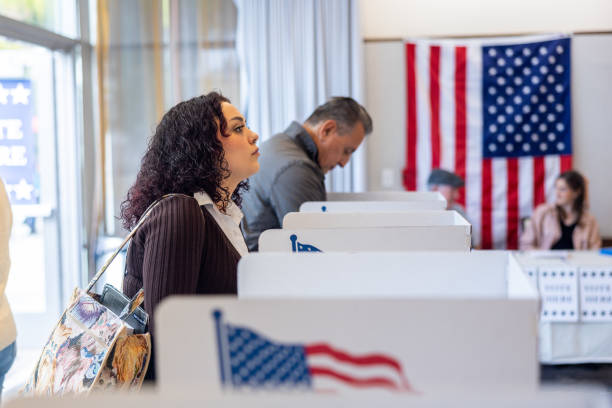Last week, President Trump issued an Executive Order banning all companies who are federal contractors from training their employees on diversity training that is “divisive” and perpetuates stereotypes. Let’s not delve into President Trump’s motivation and timing for his Executive Order, other than to acknowledge we’re experiencing a racial reckoning in this country right now that is on par to what occurred leading up to the passage of the 1964 Civil Rights Act. What’s most important is to focus on four main takeaways from Trump’s Executive Order.
First Takeaway: The Order Restricts Teaching Concepts That No One Teaches
The crux of the Order is to stop “divisive” training that perpetuates stereotypes. “Divisive” is defined as training messages that suggest:
(b) an individual, by virtue of his or her race or sex, is inherently racist, sexist, or oppressive, whether consciously or unconsciously; (emphasis added)
I’m pretty sure that no diversity professionals are teaching people that some folks are inherently racist or sexist, by virtue of their race or sex. We all have bias – it’s an equal opportunity brain dynamic where we try to pattern match and guess the answer to take a short cut as we’re all on information and sensory overload. So, it’s unlikely that anyone is teaching that if you’re white, you’re racist and if you’re a man, you’re sexist.
The other components of the restriction are even more farfetched, such as teaching that:
(a) one race or sex is inherently superior to another race or sex; or (e) an individual’s moral character is necessarily determined by his or her race or sex;
I doubt diversity professionals are running afoul of this Executive Order in their training workshops right now. But, perhaps the most telling section of this Order is this section:
(g) any individual should feel discomfort, guilt, anguish, or any other form of psychological distress on account of his or her race or sex;
Put another way — don’t deliver training that makes the white people feel bad for being white or makes men feel bad for being men. Stop beating up the white guys. This leads to our second takeaway.
Second Takeaway: The Order Provides A Hotline for Disgruntled Employees To Report You And Risk Your Company’s Federal Contract
While President Trump’s Executive Order does not restrict teaching concepts in the way most diversity professionals teach them today, it can certainly have a chilling effect on diversity professionals since the Executive Order establishes a hotline that any employee can use to report diversity training that violates the Order:
(b) The Department of Labor is directed, through the Office of Federal Contract Compliance Programs (OFCCP), to establish a hotline and investigate complaints received under both this order as well as Executive Order 11246 alleging that a Federal contractor is utilizing such training programs in violation of the contractor’s obligations under those orders. The Department shall take appropriate enforcement action and provide remedial relief, as appropriate.
Because diversity training can be called into question now and scrutinized, it’s important for diversity professionals to keep a record of their program and the concepts they’re teaching. Providing an online learning component is helpful in that regard as it serves as the written record, documenting the program and quickly and effectively counters any claims made from an employee who opposed your training message.
Third Takeaway: It’s All About How You Package Your Message
Diversity professionals have an opportunity to fine tune their messaging and get a wider, more inclusive audience working towards better outcomes rather than delivering polarizing messages. Nancy Douyon, Emtrain’s Inclusion Strategist, tells a story of how she experimented at Google with packaging a workshop she was leading. Nancy is a global human design engineer. She’s an inclusion expert for product design and she has a strong record of achieving inclusion in her work. But she brings a scientific rigor and discipline to inclusion that we don’t typically see applied to people strategies. At Google, Nancy wanted to broaden the lens of the product managers and software developers to see products from different global perspectives. She held a first workshop, entitled Diversity in Product Design. Only the black and brown employees attended. She held a second workshop, entitled Inclusive Product Design. The black, brown and “woke” white employees attended. Then she held a third workshop, entitled Humanizing Product Design. This time, a bunch of white men attended. She packaged her workshop to draw in a bigger audience so she could influence their thinking, effectuate change and drive better outcomes.
There’s a lesson here for diversity officers. You don’t need to influence black, brown and “woke” white people. You’ve got that already. Package your message to influence the demographic who is not listening to you. How do you do that? You make it less personal and polarizing and more clinical.
Describe unconscious bias in clinical terms and emphasize that it’s a brain dynamic that affects everyone. And, that we experience a Catch-22 when we have under-representation because under-representation triggers further underrepresentation due to pattern matching. It’s clinical — it’s not personal. Then describe what it feels like to be underrepresented and possibly marginalized. The problem should be clinical and not castigate anyone or make anyone feel guilty. People don’t want to feel beat up. But the appeal for changing the status quo can be and should be personal. Don’t beat someone up for the problem, but influence them to be emotionally invested in solving the problem. Remind people that everyone can be an ally and exert their personal influence to foster inclusion and achieve better outcomes. This leads us to the fourth takeaway.
Fourth Takeaway: Break Down Inclusion Into Measurable Actions That Achieve The Goal
People need a blueprint. Your C-Suite needs a blueprint. And it needs to be measurable, action-oriented and something that you and the C-Suite can benchmark and track quarter over quarter. Bring some scientific discipline and rigor to your work.
At Emtrain, we give people a framework for unpacking these charged and triggering social issues. We’ve broken down inclusion (as an outcome) into six measurable actions. Moving the needle on those six dynamics will get you inclusion. As an illustration, the most inclusive companies as identified by their workforce in our global benchmark, are those companies who score highly on employees using a system or process to make decisions and companies with a strong culture of allyship – meaning where people actively use their influence to empower a less represented or less influential co-worker.
So the practical impact of President Trump’s Executive Order is to be strategic in how you package your message; make it clinical and influence a more diverse demographic so you can effectuate change. At the same time, protect yourself (against someone calling the new hotline) by offering an online component to your work that will serve as your written record of your inclusive, non-”divisive” training messages.
Yes, it seems harder. But impediments often bring good fortune (RBG) and in this situation, the good fortune is that we’re forced to be more strategic. Keep up the good work!

Co-authored by Nancy Douyon
Nancy is Emtrain’s Inclusion Strategist and a global design ethicist and product philosopher. She is a trailblazer in human experience design with over 15 years of industry experience building scalable user research platforms and revitalizing user interfaces at leading companies such as Uber, Google, IBM, Cisco, and Intel. Throughout her career, Nancy has gained a reputation for delivering big results in a culturally honest and purposeful way with hundreds of products deployed in over 80 countries worldwide.










